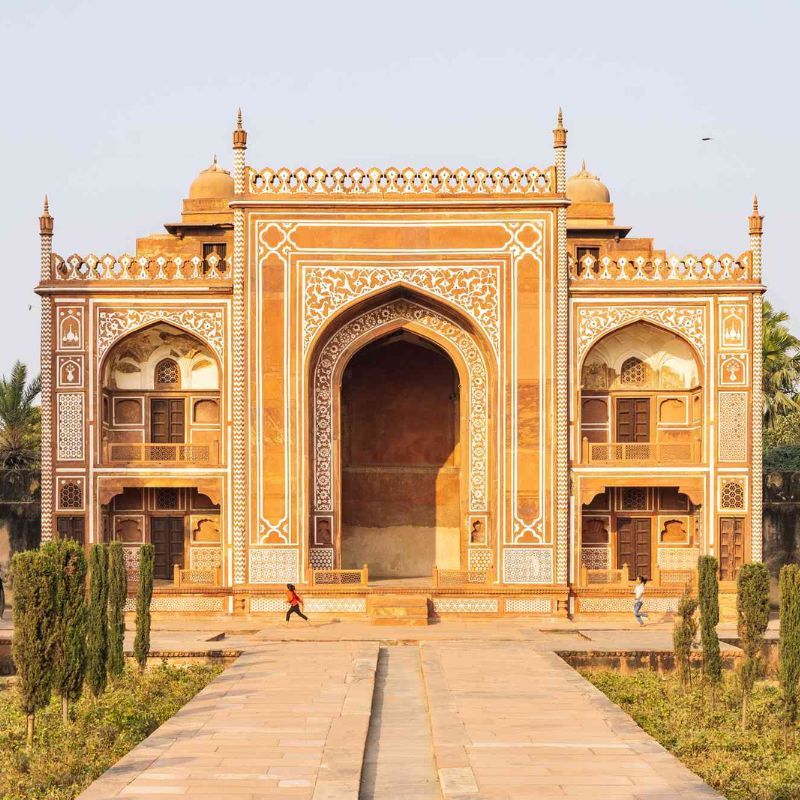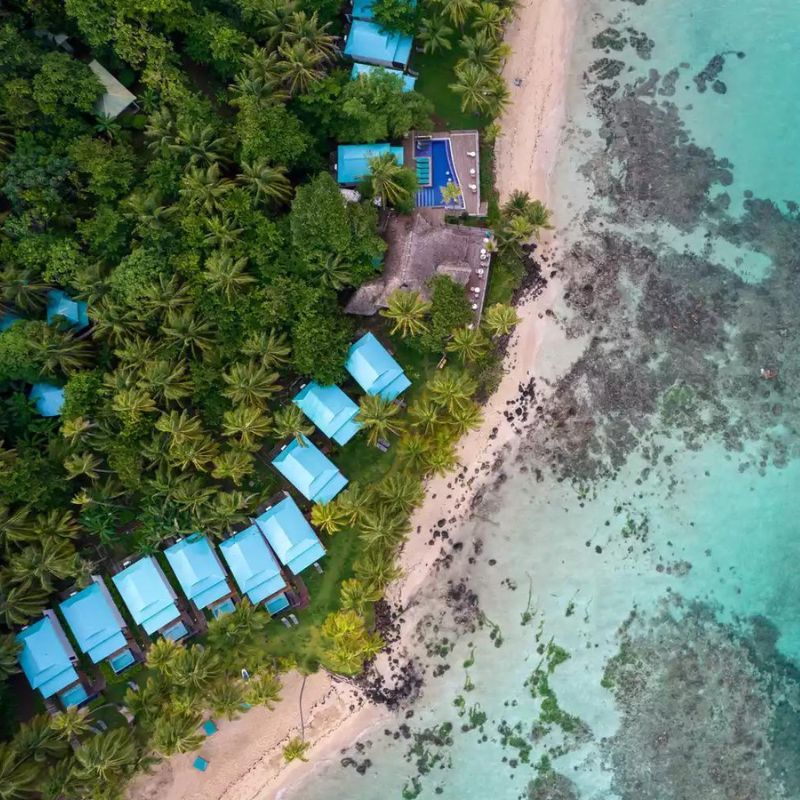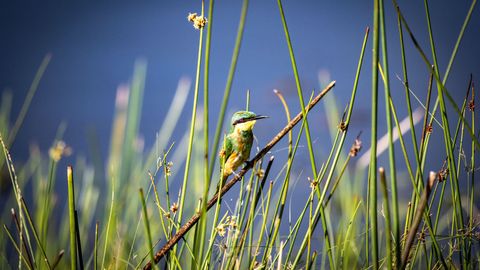
A typical safari might give the Big Five top billing, but on a bird-watching tour of Botswana, Travel+Leisure India & South Asia’s contributor discovers that the country’s winged species offer a unique—and thrilling—way of seeing the African wilderness.
Halfway through our birding safari in Botswana, my wife, our two sons, and I had somehow identified more than 150 winged species—no small feat for a family that had only recently taken up bird-watching as a hobby. We’d spotted giant kingfishers, pied kingfishers, and woodland kingfishers (the boys are big on kingfishers). We’d seen spindly saddle-billed storks and graceful herons, bee-eaters, sunbirds, and a difficult-to-find Pel’s fishing owl, with its orange feathers and black, marble-like eyes. But one little sucker remained elusive: the violet-eared waxbill.

Winged Wonders In Botswana
This diminutive creature sports an amazing paint job, with red eyes, a pink beak, violet cheeks, an orange body, and a striking indigo tail. In the pictures I saw, the bird looked like a figment of the imagination. But it is also really hard to spot. “Private,” even “secretive,” is what the guidebooks say. So one afternoon we made that our mission: violet-eared waxbill or bust. We loaded into our open-sided safari truck, cruised out of our camp in the Okavango Delta, passing herds of red lechwe and kudu nibbling on the grass, and headed to an empty airstrip where someone had allegedly seen a violet-eared waxbill once, several years ago. That’s how desperate we were.
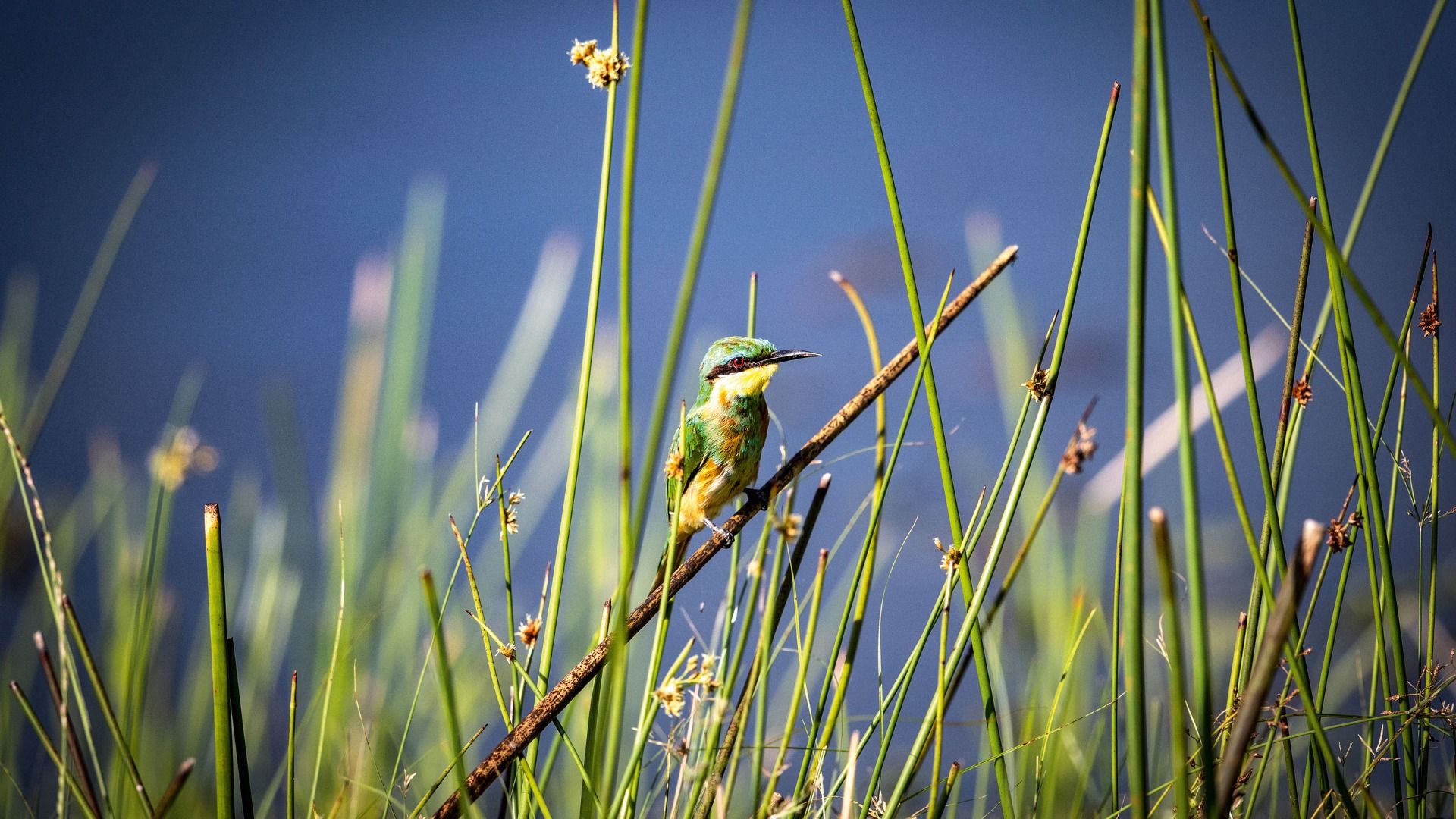
As we rolled along, I was overcome by the sense of space — miles and miles of waist-high grass stretching in every direction, the woody smell of bush sage filling my lungs. There wasn’t another truck in sight or house on the horizon. Though bigger than France, Botswana has only 2.5 million inhabitants. It’s vast, empty, and gorgeous.

When we arrived at the deserted airstrip, Diphonso Ditshupelo, one of our guides, cut the engine. He and Ian Lombard, a bird specialist who was travelling with our family, raised their binoculars and scanned the thornbushes — a favourite habitat of the violet-eared waxbill.

Ditshupelo, who goes by Dips, sat at the wheel for a quiet moment. He cocked his head, then motioned for us to get out of the truck. As we climbed down, he put a finger to his lips and turned to us with a glint of mischief in his eyes. “I think I hear something,” he whispered.

Here’s the thing about bird-watching. It’s one of those activities that seems niche, even boring — until you try it. Then you realize that it opens up a whole other way of interacting with nature. Bird-watching requires you to slow down, clear your mind, and really focus. It’s like the Zen meditation of wildlife tourism. But trying to spot elusive birds can also be as suspenseful and exciting as tracking big game. Searching for them, observing them, and trying to identify as many species as we can, has become the perfect excuse for us, as a family, to visit some of the most beautiful places on earth.

My wife, Courtenay, and I used to live in Kenya, and our sons, 12-year-old Apollo and 10-year-old Asa, grew up there, so we’ve been lucky enough to have gone on a number of safaris in East Africa. But I’d always been curious about Botswana, in the south of the continent — a country with the world’s largest population of elephants, some of the most robust conservation policies in Africa, and a long record of peace and stability.

Exploring Botswana’s Wildlife-Rich Landscape
And the Okavango Delta area, a UNESCO World Heritage site covering almost 10,000 square miles of northwestern Botswana, is one of the continent’s best-preserved wildlife refuges. It’s a rare inland delta, formed where the Okavango River empties into the desert and creates an oasis for an astonishing variety of species, from endangered rhinos and African wild dogs to very rare birds such as wattled cranes and slaty egrets. After living outside of Africa for five years, we were desperate to get back, and thought: Let’s try something new. Let’s go to Botswana and do a bird safari.
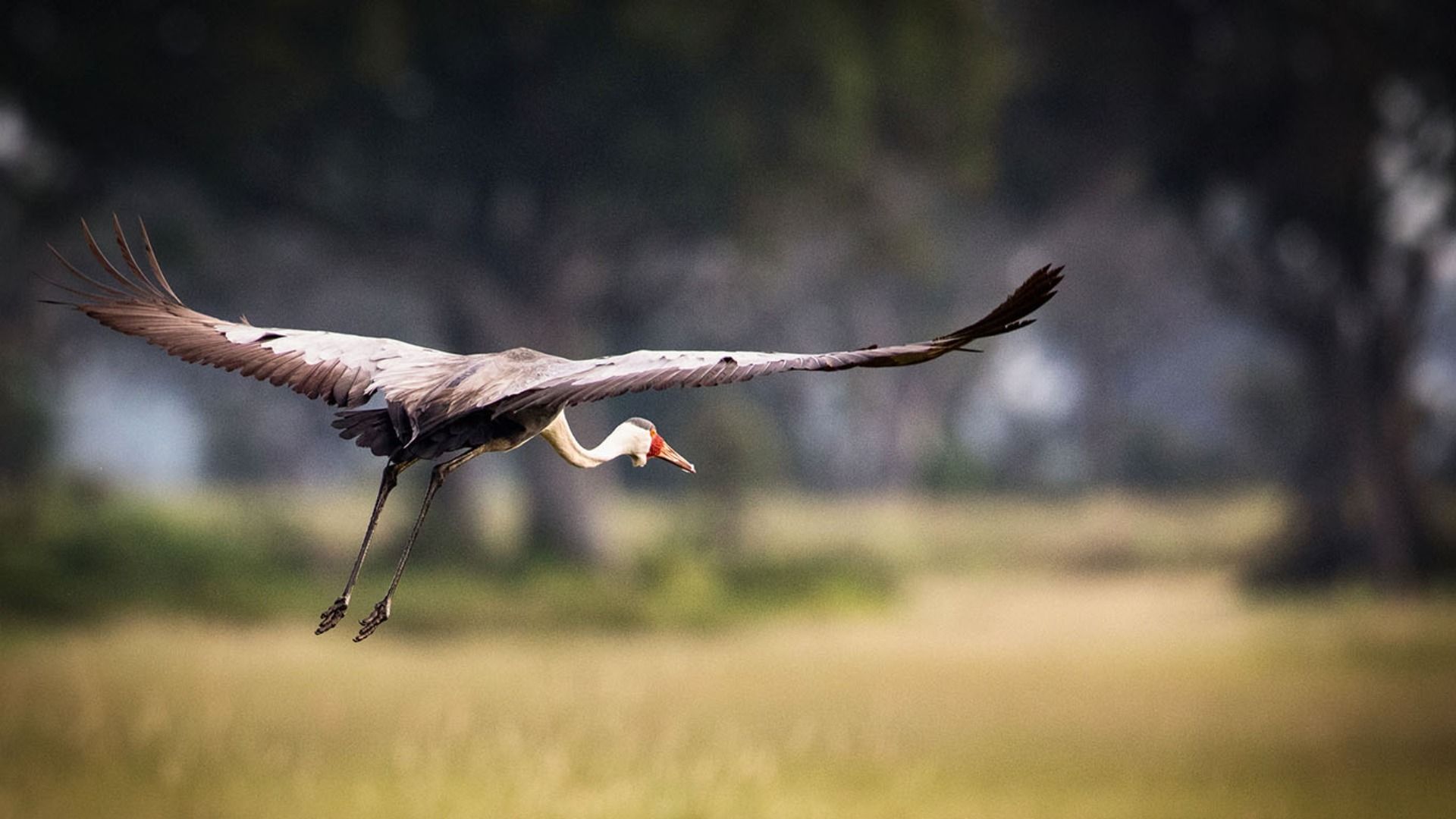
We began our trip in Kasane, a frontier town in the arid reaches of northern Botswana, near the legendary Victoria Falls. Kasane is where the borders of four African countries — Botswana, Zimbabwe, Zambia, and Namibia — converge, and since a slick airport opened there in 2018, it has become a gateway for travellers heading into the continent on safari. We connected through Johannesburg, South Africa, and broke our journey by spending three nights at a lodge outside Kasane on our way to the Okavango, a couple of hundred miles south.

The big draw in northern Botswana is the Chobe River, a gently flowing waterway that attracts large numbers of elephants, giraffes, buffalo, migratory birds, and waterfowl. We could see many of these animals on the riverbank from our veranda at the Chobe Game Lodge, where the staff were exceptionally kind and the menu featured local specialties such as samp and beans. But the lodge’s most distinguishing feature is the fact that, thanks to a pioneering, decades-long effort, all 20 of its guides are women — a real rarity anywhere in Africa.

On our first morning, Gobe Mmereki took us out on a pontoon boat. Mmereki is a real pioneer. She grew up in a village in eastern Botswana watching the National Geographic channel and dreaming of becoming a safari guide. She was the only woman in her training program. A lot of men had trouble believing she could drive a safari truck at first, she said. Of course, she could, and now she was confidently piloting us up the Chobe River in a boat as the sky turned from soft pink to a rich blue. The riverbanks were teeming with wildlife, including a herd of elephants taking a playful bath, blasting each other with their trunks.
Spotting Rare and Migratory Birds
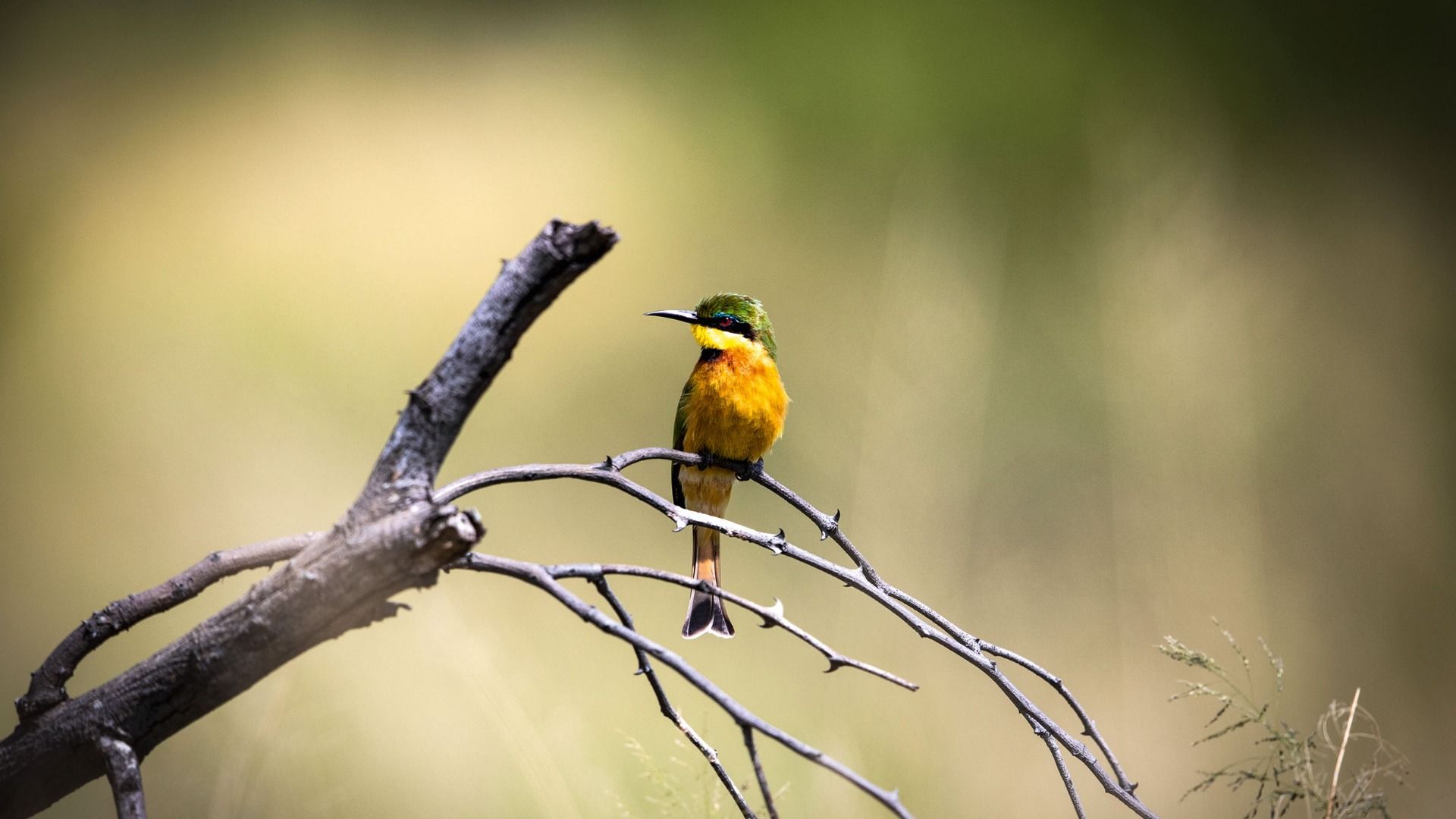
As we puttered along, Lombard, the expert birder who was our personal guide for the entire trip, swung his binoculars toward the marshy riverbanks. (Expert birders never rest. They’re always on the lookout for something new, unusual, or rare.)
“Apollo and Asa!” he called out. “Look. Right there!” He stabbed his finger toward something. “There’s a ridiculously cool little bird.”
I lifted my binoculars to my eyes, but couldn’t see anything but a blur of river grass.
“Come on, guys,” Lombard said with mock exasperation. “I’ve told you this before. You can’t look at the bush. You have to look into the bush.”
“Wait,” Apollo said (he’s the bird expert in our family). “Is that a new one?”
Lombard smiled. “Good work, Apollo. It is a new one. It’s a black-winged pratincole.”
“A what-winged-what?” I asked.
“A. Black. Winged. Pratincole,” he repeated very deliberately in his crisp South African accent. “And it’s pretty rare.”

I have to be honest. When I finally got the little guy in my field of vision and focused, my first thought was: What’s the big deal? It was a bird perhaps the size of a sparrow, with black wings, a white breast, and an orange beak. It was nowhere near as majestic as the goliath heron that had just swooped over us. It wasn’t making a cool sound or doing anything interesting at all. It was just rummaging around in the sandy riverbank with its beak, looking for bugs to eat.

But the black-winged pratincole had a story. “It’s a migrant from Russia,” Lombard explained, which meant it had flown thousands of miles to get to this spot on the Chobe River. “They used to travel in massive flocks of 20,000, but they haven’t been seen in such numbers for a long time. It’s possible that much of the world’s population now lives in one large flock. Imagine if something happened to that one flock. It would be a mass extinction.”
Hearing his words changed the way I thought about birds. From that moment on, I had more interest and more empathy for our friends in the sky. To the uninitiated, many might look alike. But as Lombard helped me appreciate, that just means you’re not looking hard enough.

A quick word on Lombard. He’s tall, tan, and loves short shorts. He looks like the Crocodile Dundee of southern Africa. He was our paid friend the entire trip, handpicked by andBeyond, the luxury travel company that organized our safari. We met him at the Johannesburg airport after stumbling off an overnight economy flight from London, hardly looking our best; both of our kids, come to think of it, had thrown up on the plane. But he was our buddy to the bitter end, and how lucky we were because of it. Not only did he possess a jaw-dropping volume of wildlife knowledge, especially about birds, but he brought something even better: he was fun, always bursting with an irrepressible and infectious enthusiasm about every animal we saw, and constantly cracking us up.

“Oh my god,” he belted out on our second day at Chobe while we were driving around looking for a leopard. “That is another ridiculously rare bird. See in that pond just before the sandpiper? It’s a female pygmy goose!”

Of course, I thought: a pygmy goose! It was a small peach-coloured bird with a white head that is relatively uncommon, paddling around the water lilies and feeding on the seeds and flowers.

As we drove away, Lombard marvelled at our good luck — though it wasn’t just luck. We would have never spotted that bird if it hadn’t been for his skill.
“Guys, we just found a pygmy goose while looking for a leopard,” he declared, suddenly and immeasurably happy. “That right there is the beauty of birding.”

Before we left Chobe, I wanted to get a fuller sense of where I was. It was my first time in Botswana and I was itching to know what lay beyond the lodge gates. So Lombard and I got a lift into Kasane, which was sunbaked and deserted but had one memorable landmark: growing in front of the police station was a hollowed-out old baobab tree that was once used as a prison, with space for about 10 poor souls inside.

Looking up at the tree as warthogs trotted down the dusty main drag, I was suddenly aware of how far I was from home. A Botswanan policeman leaning against the tree seemed to read my mind.
“You don’t have a prison like this in your country, do you?” he asked.
Our next stop was the Okavango, the focal point of our trip. From Kasane, we took a light airplane an hour or so southwest, the bright morning sun slanting in through the windows. Looking down, I didn’t see many other camps. Botswana follows what it calls a “low impact, high return” tourism strategy that strictly limits the number of lodges in conservation areas and the beds within each. We flew over miles of white sand, waving grasslands, ash-coloured termite mounds rising like funeral plinths, and beaten animal paths leading like veins to watering holes. When the pilot cracked open the window, in came that rich smell of bush sage again.
On the airstrip, a broad-shouldered man named Harris Pullen greeted us at a table set up in the shade of a thorn tree.
“Mojito?”

Exploring Xaranna Okavango Delta Camp

We hadn’t even made yet it to our next lodge, a remote and exquisite andBeyond property called Xaranna Okavango Delta Camp, yet here was Pullen, the guest relations manager, handing me and Courtenay each a sweating glass. The drink was cool, tart, and delicious. Right away I could tell that in andBeyond’s hands no one was going to suffer.

But it wasn’t simply the luxury that made our experience so memorable. It was the way it was done. Every single member of the staff was filled with warmth. Pullen was constantly hooking us up with great drinks. The chef, Lungile Mbangi, whipped up amazing food at every meal: pancakes and crêpes at the kids’ request, gorgeous salads and steaks. And somehow, in the two days that we were there, Yolande Coetzer, the lodge manager, managed to squeeze in all the activities we wanted, from fishing to riding in dugout canoes.
Lions and More

That first night at Xaranna, as we drifted off to sleep in our tent, I heard alarm calls from a herd of impalas — a hissy, throaty sound. I’d learned on previous safaris that impalas do that only when they’re really scared. Later, in what felt like the middle of the night, some guinea fowl cackled. When we woke up and stepped out for breakfast, our “spotter,” who goes by Johnson, was standing in the middle of a sandy path, head down, studying the ground.
“Predator,” he said. (Johnson, whose full name is Modala Molaimang, is one of those direct, no-BS types more comfortable reading the world of wild animals than small-talking with outsiders.) He gruffly waved over the kids. They leaned down to get a closer look at a fresh footprint in the sand. Johnson pointed out a small notch.
“Claw,” he said.
This is one of the most thrilling things about going on a safari: you’re constantly piecing together information. From the tracks in front of us, the alarm calls we had heard in the night, and the position of the sun at this very moment, Johnson computed that a predator had skulked through the camp between 3:30 and 4 a.m. He motioned to the truck. If we move now, he was implying, we might be able to catch up with it.
The seven of us motored out, following the footprints along a track until they broke off in the direction of a small forest. Johnson dismounted, light, quick, barely making a sound. Usually, stepping out of a truck in a game park crawling with lethal predators is a big no-no. Courtenay turned to me, eyes wide with concern: “He’s walking.”

Johnson moved like an infantryman: slowly, carefully, aware of everything around him, like something was about to spring out of the bushes. A few minutes later he climbed back into the truck, whispering something to Dips, our lead guide, in Tswana, Botswana’s national language. We rumbled forward. Then the car abruptly stopped.
Johnson couldn’t suppress a smile as he turned to us and said: “Lion.”
Two male lions lounged maybe 100 feet from us, under an acacia tree, sitting with their heads up and front paws straight in front of their bodies, sphinxlike. They were enormous — scientists say that Okavango lions are the biggest and strongest in the world because of the plethora of games in their ecosystem and the fact that they often have to trudge through water to kill it. Apparently, these two had been sitting in that very spot under the acacia tree for some time, but no one had seen them except Johnson, who rarely bothered with binoculars. His eyes were the binoculars. We pulled closer and then closer still.
Unlike other safaris, I’ve done in East Africa, where every carnivore has a ring of 10 trucks around it, this time we were utterly alone. No other cars. No sign of anyone. Just us and these two 400-pound apex predators. Their paws were the size of oven mitts. We were so close I could observe the individual veins in their rip-you-to-shreds shoulders. Unlike the others I’ve seen in the “wild,” these brutes were clearly not accustomed to people staring at them. I felt a sense of danger being so close. Their yellow eyes tracked our every move.
“Look at the size of that belly,” Dips said. “He must have had a buffalo or a zebra.”
I have to admit that, as spectacular as the sighting was, I felt a sense of relief wash over me as we drove away.
Back at the camp, we enjoyed our own feast — amazing filets of Botswanan beef, salads, and fresh bread. Bellies stretched like lions, we waddled back to our tents. They were elegant and spacious, with polished wood floors and screens instead of walls. Our bed came equipped with a small air-conditioner, and as we tucked ourselves in, we were surrounded by wafts of cool air, a cacophony of whirling insect sounds and birdcalls — and the occasional not-so-distant grunt of a lion.
We packed the next two days with activities that the kids especially liked. We fished in a shallow pond and paddled around in mokoros, Botswana’s distinctive flat-bottomed dugout canoes. It was January, which is the rainy season, so we had some ponds to explore but not nearly as many as there would be in a few months’ time. From July to September the skies clear and the Cubango River that flows from Angola, in the west, brings a staggering 10 trillion litres of water washing across central Botswana, doubling the size of the delta and transforming the dry savanna into one of the world’s largest swamps. The Okavango becomes a network of emerald-green islands and narrow channels filled with hippos, fish, and waterbirds. Mokoros become indispensable for navigating all of this and reaching higher ground, where mammals like buffalo and zebras, and all the predators that stalk them, concentrate in almost unbelievable numbers.

But there’s no bad time to visit Botswana. When we went, we still saw game in huge groups, and since it was winter in the Northern Hemisphere we were able to spot many migratory birds, like that pratincole that had flown in from snowbound Russia.
As the days passed, we kept finding birds we hadn’t seen before. We saw a striped kingfisher chase down a dragonfly and snatch it with its beak. “The first kill of the day,” Dips said. Asa spotted a lilac-breasted roller, common but still astonishingly coloured. “You can see its blue wings and the black-and white-stuff underneath,” he observed. Lombard saw a humpbacked hadedah ibis squawking in a dead tree. “South Africans hate that bird. So noisy,” he scowled. “That’s a trash bird.”

He explained that, unlike mammals, most birds don’t have to worry about predators because they can fly away, meaning there’s no need for camouflage. Instead, they flaunt spectacular colours to attract mates across long distances. Ground birds, which are more vulnerable to predators, tend not to be as colourful.
From Herding Goats to Birdwatching Bliss
On one early morning drive, Dips told us about the village at the edge of the delta where he grew up. His job was herding goats. That is a hard life. I’ve seen it: little boys, aged 12 or younger, out in the searing sun, surrounded by stalking predators, in charge of protecting their family’s wealth. It was while doing this toil that Dips fell in love with birds.
“They were the only form of music we had,” he said. “We drew motivation from them.”
He and the other boys devised ways to remember the birds they heard. “I-am-the-red-eyed-dove, I-am-the-red-eyed-dove,” he said in the particular cadence of that bird’s call. Or “work-harder, work-harder,” in the purring rhythm of the Cape turtle dove.
While Dips was sharing this, I felt the truck lurch. Sudden, violent movement in the back seat. Uh-oh.
“Give it.”
“No, you give it.”
“No, you give it.”
I whipped around. Apollo and Asa were tussling over their identical pairs of Swarovski Optik binoculars. Good binoculars make a difference, and these Austrian-made models, which andBeyond lends to guests on birding safaris, were very good. But of course, there was some imperceptible difference between the pairs my kids had been assigned and one of them was accusing the other of switching them. The contrast between Dips telling us how he grew up herding goats and our kids fighting over $1,000 binoculars was a bit much. Botswana, with its diamond industry and long record of stability, has done much better than many other sub-Saharan African countries. But it’s still vastly poorer than the U.S. or Europe, and the last thing I wanted to do was to come across as ungrateful or entitled. So I snapped at the kids and then, for the first time, an uncomfortable silence fell over the truck.
Courtenay finally broke it by turning to Lombard and asking, “Do all families fight?”
He sighed. “All families fight.”
A few minutes later, though, watching two male impalas lick each other’s faces, Asa said to Apollo with great tenderness, “Imagine if you and I did that every morning.”
Dips overheard and said, “It would strengthen your bond forever.”
Our last camp was Sandibe Okavango Safari Lodge, another andBeyond property. Internet access is available in the suites but not the common areas, a way to encourage guests to stay off their devices and socialize. The suites are huge, each with a plunge pool on a deck overlooking the wetlands, where we spotted scores of new birds.

Apollo had arrived in Botswana hoping to see a Pel’s fishing owl, one of the world’s largest owls, and one afternoon while walking across Sandibe’s wooded grounds, he looked up into a tree and saw two huge black eyes staring down at him. It was a Pel’s. Apollo jumped up and down and Lombard, standing right next to him, pumped his fist like a tennis player after smashing an ace. He had probably seen a Pel’s countless times, but he was as into the hunt as Apollo.

After that we got greedy.
“We’ve seen more than 175 different birds,” Asa said. “Let’s go for 200.”
“Let’s find the violet-eared waxbill,” Apollo added. “I’ve heard people saying that’s a really cool one.”
That afternoon at the airstrip was actually our last full day. As Dips motioned for us to get out of the truck and follow him, he stopped to listen again, and this time even I could hear a joyful whistling. We took a few quiet steps forward. Pause. Then a few more. And there in the bush, perched on a tiny thorn branch and no bigger than a shot glass, sat the magically coloured bird.

I watched it for a few seconds. It heard us coming and retreated deeper into the thicket, just like the bird books had warned. That was all we got — a short, fleeting glimpse, like something from a dream. But as we walked back to the truck, Apollo and Asa were beaming. “That really is a precious little bird,” Apollo said.

It was the 205th bird species we had identified, not too shabby for a bunch of city slickers on a weeklong vacation. Botswana has around 600 species; across the world, scientists say there are 11,000.
So we didn’t quit there. We decided to go for more. Because with birds, as with so much else in life, there is always more.
All photographs courtesy: Crookes&Jackson
Related: This Life-Changing Safari Experience Includes Sleeping Under The Stars In Botswana
Frequently Asked Questions (FAQs)
Answer: Etihad offers connecting flights to Maun from Mumbai via Johannesburg. Okavango Delta is 147 km from Maun.
Answer: andBeyond offers eight-night Botswana birding safaris from INR 9,79,519 per person.


